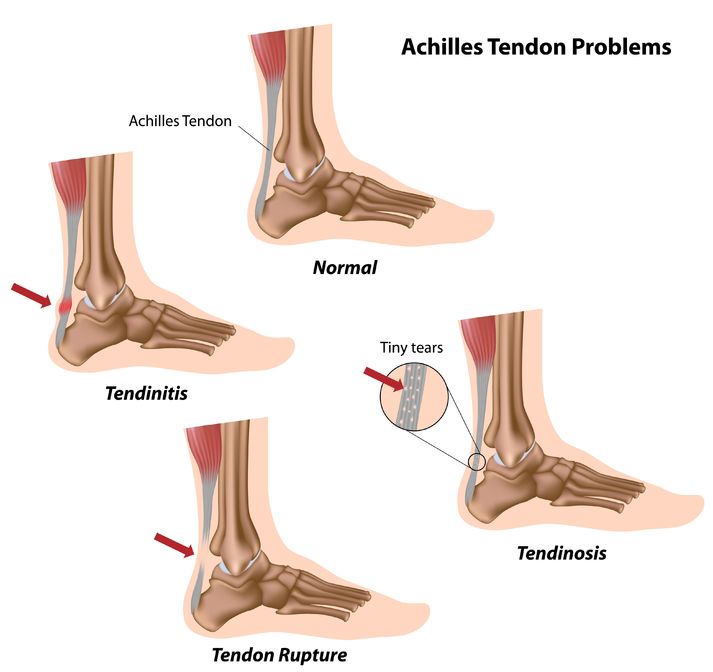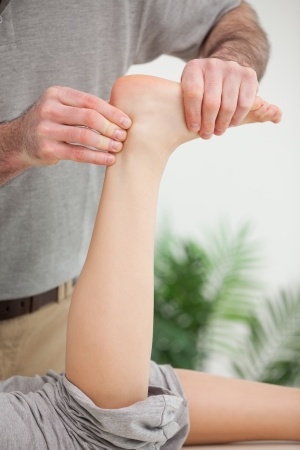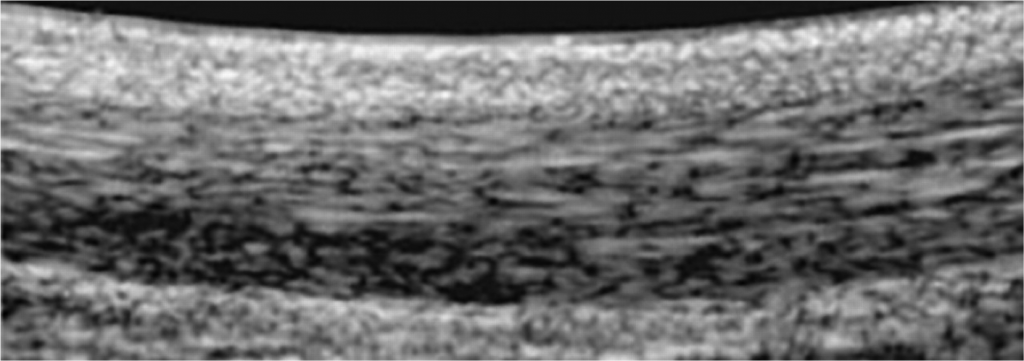My Aching Achilles

Tid Bits of Info
- If you hurt your Achilles Tendon, seek medical advice from your Physical Therapist.
- Use the RICE principles of treatment initially.
- Eccentric exercises have shown promise to healing Tendinosis.
- “Pushing through” the pain of Tendinosis might be needed to stimulate the healing process.
- A Physical Therapist can design an exercise program that will stimulate the healing of the Tendinosis tissue.
Injuries to the Achilles Tendon are common particularly among active men over the age of 35. Overuse, lack of stretching, aging (especially men over 35), and high impact repetitive activities like running, basketball, and tennis can cause injury. Chronic Achilles Tendinosis of the mid-substance of the Achilles Tendon is one of the most difficult conditions to treat. Any Physical Therapist that works in the out-patient, orthopaedic setting will confirm that these injuries are very stubborn to rehabilitate fully, but there are several treatment protocols that are promising.
The Achilles tendon is one of the biggest, thickest tendons in the body. It connects the calf muscles to the heel bone and transmits their contraction force to the foot so that we can walk, run, jump and in general be mobile. Injury to the tendon can result in swelling, stiffness, and pain.
Tendinitis results from a particular incident or activity and is relatively acute in nature. The onset occurs shortly after the incident and the symptoms correlate well with the severity of the acute damage to the tendon. If the tendon were examined under a microscope, there would be micro damage to the tendon fibers (cells) and an active inflammatory response in those tendon cells. Most times the RICE principles (Rest, Ice, Compression, and Elevation) of acute injury treatment will resolve these symptoms in a few days/weeks.
Achilles Tendinosis is degeneration of the tendon. It is different than Tendinitis in many ways. While it might have begun as Tendinitis, it has become a chronic condition. Over a prolonged time period, the tendon degenerates into a Tendinosis. The Tendinosis fibers (cells) are different histologically when compared to a normal Tendon cell. There are more interfibrillar glycoaminoglycans and the collagen structure changes with poor vascularity.
Tendinosis cells lack an active inflammatory response. The surrounding tissue might be inflamed and there is usually a thickening of the injured area that is painful to the touch, but the actual Tendinosis area is not causing the pain secondary to a inflammatory response. The RICE principles of treatment help to reduce the severity of the symptoms, but do not change the “make up” of the Tendinosis cells. Consequently, the healing process of these cells is very slow and in some instances does not occur.
Treating Tendinosis

There are several approaches to help promote healing of Tendinosis. Unlike treatment for most musculoskeletal injuries, reducing inflammation is not goal. Normally inflammation is the primary source of pain and can inhibit the healing process, so reducing inflammation is the main focus. In the case of Tendinosis, the goal is to reduce the symptoms and restore the patient’s function. There are several ways of approaching this goal.
Physical Therapy
Experienced Physical Therapists recognize that recovery is a slow process and develop a regimen that progresses over time. They often begin using modalities to reduce the inflammatory response in the surrounding tissue and to reduce the pain in the injured area. The long-term goal of therapy is to restore proper vascularity to the injury site and hopefully re-align the collagen fibers. An eccentric training program offers is one of the most promising regimens for producing this change.
Eccentric exercises are designed to place the tendon under a great deal of tension when it is elongating. This type of contraction has been shown to increase muscular and tendon soreness, following an exercise routine that concentrates on this type of contraction. The pain and the presence of certain blood enzymes are a good indication that muscular and tendon cell damage has occurred during the workout. The damage to the structures is thought to promote healing or hypertrophy of the cells and lead to an increase in strength. If the patient can “push-through” the pain when working on the area that has been diagnosed with Tendinosis, there is a chance that eccentric loading will help promote healing in those cells.

An Achilles tendon with chronic tendinosis shown by ultrasonography before treatment with eccentric calf muscle training. The typical findings are a localised thickening, focal hypoechoic areas, and an irregular tendon fibre structure.

Ultrasonographic image of an Achilles tendon after treatment with eccentric calf muscle training. The typical findings are a decrease in tendon thickness, no hypoechoic areas, and a regular tendon fibre structure.
Platelet-Rich Plasma (PRP) Injections
The PRP treatment procedure is designed to help repair and regenerate the damaged tissue. A small portion of the patient’s blood is extracted, and the plasma portion is separated in a centrifuge. This plasma has a high concentration of platelets and growth factors that can be injected directly into the injured/damaged area of the tendon. In theory, this will enable the tendon to heal more effectively because it has supplied the basic ground substances (different growth factors) that are needed by the tendon cells to heal, proliferate and return to a more normal consistency and alignment. The patient is then placed into a good rehabilitation program to help stimulate more healing and return to pre-injury functional levels.
This is a relatively new treatment procedure that is being used more frequently throughout the world. It has been used in Europe for a much longer period of time and has recently gained popularity in the States.
Tendinosis Surgery
The injured tendon tissue may not always be able to heal on its own. An injured tendon can cause pain, loss of strength and gait deviations as a result of pain. This can all lead to decreased overall function. If conservative treatment is unsuccessful at restoring normal function, then surgery might be required to remove the injured/damaged portion of the tendon.
This procedure requires the surgeon to split open the tendon longitudinally (along the natural coursing of the tendon fibers) and then locate and remove the damaged Tendinosis cells. The remaining healthy tendon is sutured “back together” and the patient will proceed with several months of rehabilitation to re-establish motion, strength, proprioception and function.
Achilles Tendinosis is difficult to treat and rehabilitate successfully. Time and a good Physical Therapy program that relies on a heavy dose of eccentric exercises might be the best way to approach the rehabilitation process initially. Working with trained medical advisors, patients will have to choose a treatment procedure that eliminates the symptoms and helps to restore the normal fiber consistency and alignment. The patient will still need to visit a Physical Therapist that can help to put them into a well-designed exercise routine. They will need guidance and re-assurance that they are capable of returning to a level of function that resembles their pre-injury status.
























